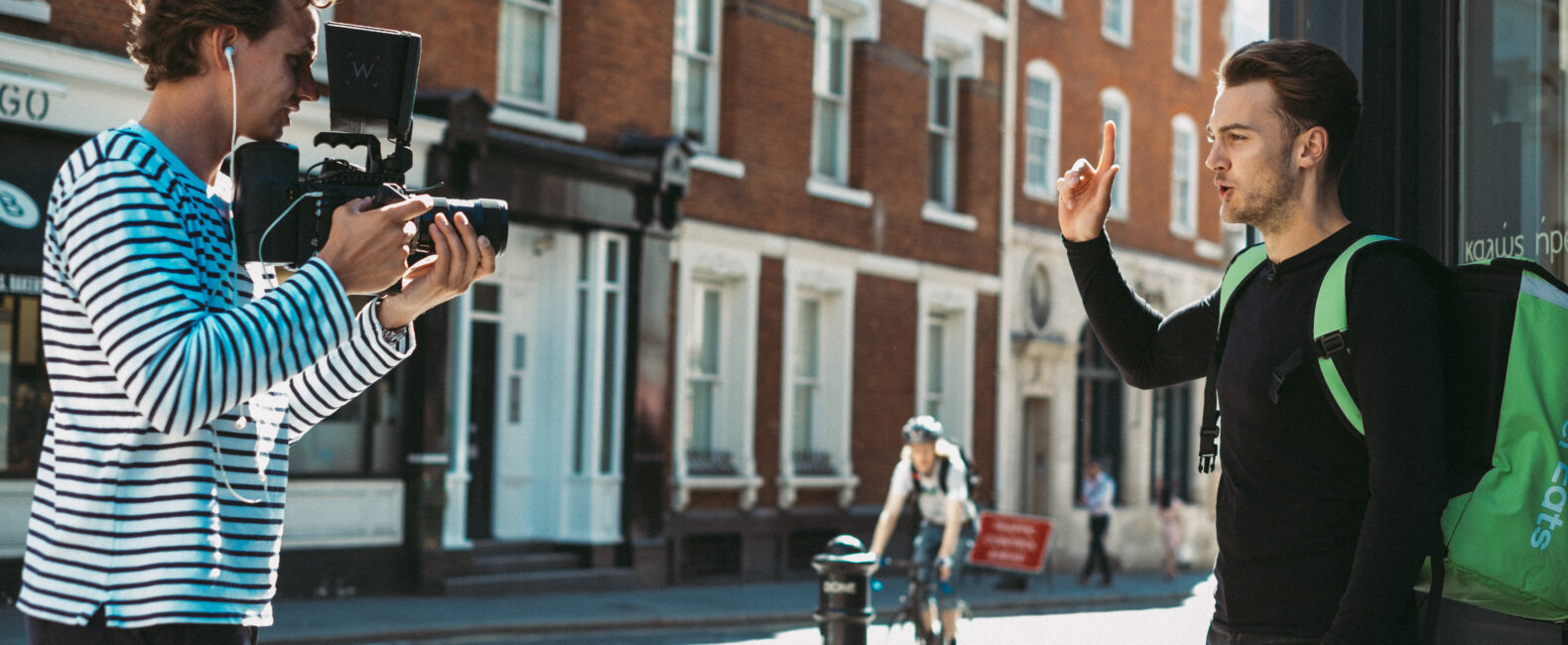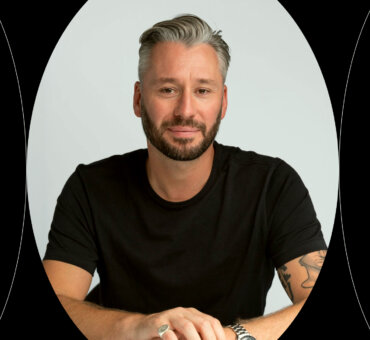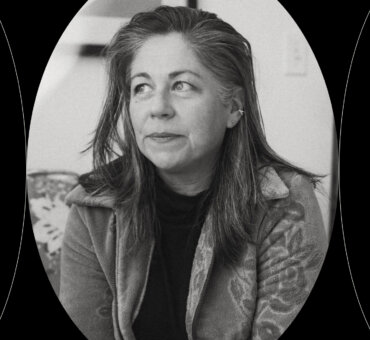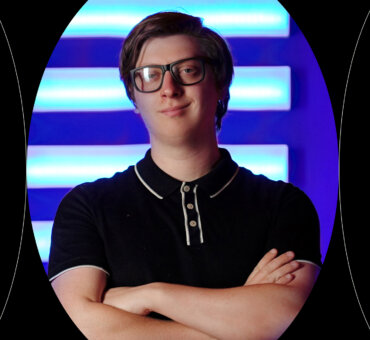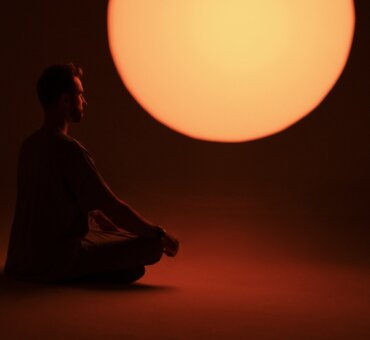If YouTube is going to teach you one thing, it’s adaptability. Whether you’re talking about the creative aspect or the logistics, being nimble is key. You’re constantly juggling a million different tasks and someone inevitably is going to throw something else in the mix.
There are creatives who crumble under the pressure, and then there’s the team at TOPJAW— Director Will Warr and Host Jesse Burgess—oddly enough, they seem to live for it.
“We’re all so wrapped up in our phones, technology, Instagram, and what looks great. We want to capture some more highs and lows,” Director Will Warr told us. “Jesse and I would be passed onto somewhere that was brilliant and the next place we could take the piss because it was terrible. It was a bit more of a journey…but it does lead to a good film.”
In other words, perfection is boring, and TOPJAW is leaning into that. Of course, that doesn’t mean it’s not expertly crafted, they’re just showing the whole journey in front of the lens. And, through their travel and lifestyle guides on YouTube, they’ve amassed an audience of more than 170,000 subscribers who love to experience it too.
We talked with Will about him and Jesse’s work on TOPJAW, from developing the channel to riding in a supercar with a celebrity chef. Hold on tight.
Musicbed: What’s keeping you busy these days?
Will Warr: Jesse [Burgess] and I went on the Rickshaw Run, which is a tuk-tuk race through India, and have been editing all the archive footage. It’s been an absolute slog, to be honest [laughs]. It’s about 10 days of shooting as much as you possibly can each day. We’ve had various editors on it for the last couple of years since and no one’s really managed to turn it into anything great. So, in a weird way, quarantine’s helped both of us get it finished.
How did you and Jesse end up starting TOPJAW?
Jesse and I both shared an office. I think we kicked off about five years ago now, working on different projects. He was a marketing manager for a brand and I was an aspiring filmmaker. He had a background in modeling and a bit of presenting, so he was pretty well versed and experienced with his presenting style and technique. I was absolutely itching to work out what my filmmaker style was and develop as a creative. And it was just the right time for both of us.
There were about 18 months we spent just producing films about London. It didn’t get as much traction as we hoped, or as we believed we deserved because we were putting a lot of hours into it. Only so many people are going to be interested in the best cheese sandwich in Soho, right? So, a couple of years ago we had a lightbulb moment and started to do these global food and travel guides, which now TOPJAW’s known for.
Overall, the two of us loved shooting together, creating. I’ve been surrounded by a lot of people who are very driven and creative. I just wanted to do more and create something that represented my style as a filmmaker. And now our style is TOPJAW.
What do you think is different about learning film through a YouTube Channel instead of film school?
There were definitely some gaps in my experience because I wasn’t classically trained in any film school. For two or three years, I wasn’t sure what a gaffer was or what the role of a producer was because I was just bloody doing it all. Jesse and I were going out there, we’d approach the restaurants, we’d get all the permits, and get the permissions we needed. I was doing the sound, shooting it, and editing it.
You get put in situations where you just have to be thinking about everything. It’s a real stress test and it teaches you a lot. In those kinds of documentary-style shoots you don’t want to miss a moment. We might be taking the piss a little bit and trying to sneak away into a kitchen because the guy’s told us we’ve got five minutes. Moments like those teach you to be so quick and on the ball and know where all your gear is. You’ve got to know where the next shot is and how to direct Jesse to get what we need in such a short period of time. So in some ways, it has taught me so, so much. It’s been a rounded education on filmmaking under pressure.
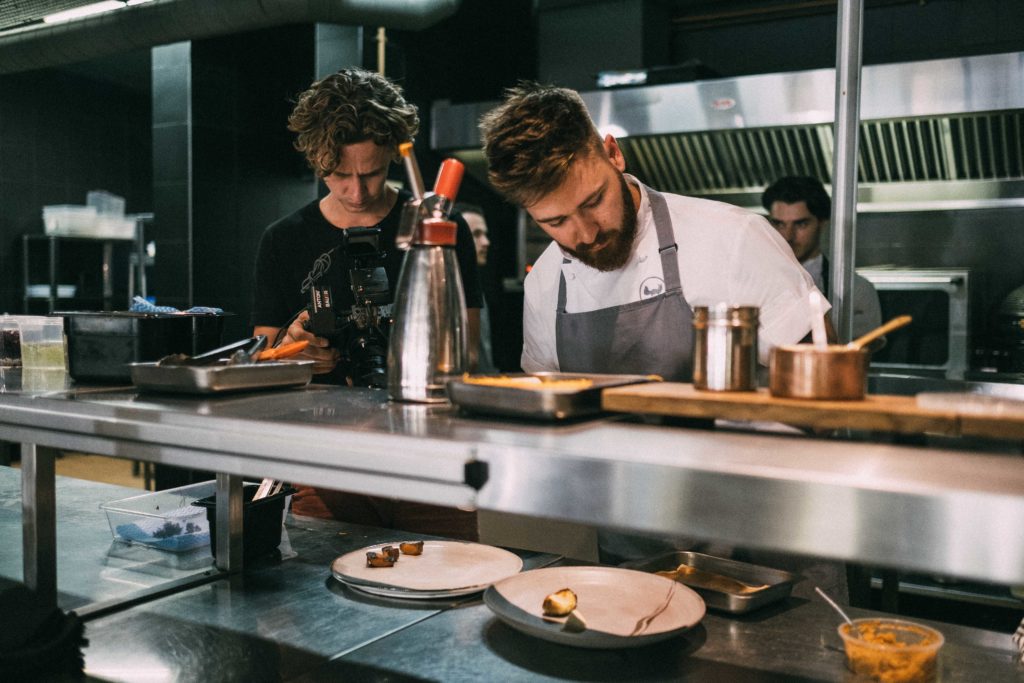
The small crew has got to be an advantage though, right?
That’s part of the beauty of TOPJAW, I think. The moment we bring a bigger crew, everything changes. We’ve had a couple of shoots where we’ve done brand deals and we had a sound guy and three or four clients on set. The atmosphere changed a little bit and there’s more pressure and there’s a little less banter. So I feel like our process is unique because it’s like Jesse and I are just having a laugh on set.
Once you two decided to work together, how did you hone in on a concept for the channel?
First, we love what we do. We eat out every possible opportunity in London. London has an amazing food and drink scene, with some of the world’s best restaurants. It was something that definitely interested us. I had a handful of different foodie clients as well, so it lent itself quite nicely there. We always liked the idea of doing travel guides because it allows us to travel and allows us to have these experiences. Plus, we wanted it to appeal to the masses and it was something that could be watched and loved by everyone.
Listen to TOPJAW’s Curated Playlist
Also, the traditional “travel show” has become a bit stale, too.
Oh, definitely. We’re known for a particular style of shooting, but also the energy, vibrancy, and humor of Jesse’s presenting. To be totally honest, it’s just very natural to us. It feels right. And this is something that I’m proud of sharing because it’s something that people can relate to and want to be part of.
How do you develop the concepts for your episodes?
At the moment, we’re trying to come up with new concepts. For the last 18 months we’ve been doing 48 Hours In guides to different cities around the world. We’ve done Bangkok, Amsterdam, Paris, L.A. That format works really well because we can look online, see where people are searching. We can go on Google Trends and see what comes up with SEO results to make sure that we’re shooting guides that people want to see. It really matters. If you do 48 Hours In Uzbekistan, it’s just going to sit there with no views.
So, that’s been a tried and tested format and we feel like we’ve nailed it. We’ll keep rolling out films in our 48 Hours In series slowly. Now, though, we want to try out different formats with the end goal of doing something on TV or Netflix.
The 48-hour guide dates very quickly. It’s great for YouTube, but right now we’re working to come up with a handful of concepts. One is Get Lost. Rather than doing all this research on our normal 48 Hour In guides, we turned up in each of these cities—we did Dublin first—with no plan whatsoever. No hotel booked. And way less technology. It’s all down to local recommendations on where we should go.
Why put yourself into those unpredictable situations?
We’re all so wrapped up in our phones, technology, Instagram, and what looks great. We want to capture some more highs and lows. With this Get Lost series, it meant that there was a bit more trepidation. Jesse and I would be passed onto somewhere that was brilliant and the next place we could take the piss because it was terrible. It was a bit more of a journey.
Although, as a filmmaker, it’s my worst nightmare [laughs]. We’re just walking up to these places with my RED on my shoulder, with no permission to film anywhere. But, it does lead to a good film. There are definitely more highs and lows, and I think people like seeing you in tricky situations.
And it comes across as more authentic when things aren’t great all the time.
One-hundred percent. They can relate to it. On all of these super polished Instagram feeds, life just looks so glossy, doesn’t it? We want it to be real and want people to imagine they could be there, in our shoes, experiencing it with us. If we just go to all the high-end restaurants and they’re not accessible to people, then I don’t think our audience would be as interested.
As a filmmaker, how do you plan for the unpredictable?
From a kit perspective, I’m taking all sorts of spares. Without having an assistant, you’re carrying around everything for every possible scenario. But, we are a small setup and it tends to be me with my RED on my shoulder, or me with the Blackmagic Pocket 4K and a lapel mic in the back pocket with all the batteries I need. So, hopefully, nothing can go too wrong.

For the production, we definitely love freestyling when we’re on location. Both of us are very nimble and we can smooth talk restaurant owners to get as much possible access. We were out shooting in Bangkok for the World’s 50 Best Restaurants. We were doing a piece on Gaggan Anand, who I think is the number-one chef in all of Asia. He drives around in a supercar and lives a very lavish lifestyle. But, it went from us shooting with him and really connecting with him, to all of a sudden flash forward 24 hours and we’re filming TOPJAW in his house. He’s feeding us lunch, he’s taking us out for a spin in the car.
We’re up for whatever, getting ourselves in crazy, unreal experiences. One thing leads to another. And that was amazing. It leads to some very cool experiences. We’re always trying to put ourselves out there.
Then, you have the negative side of things. There are hiccups with the kit. For our recent episode in Dublin, I set Jesse with the task of charging up all the batteries overnight. Of course they weren’t plugged in [laughs]. But, the highs and the lows that come along with these episodes make it relatable and accessible. We’re really up for documenting all of that. It all makes such a great story.
If you’re wanting to get started on your YouTube Channel, check out our episode with Yes Theory on how they found success and 5 million subscribers.















































































